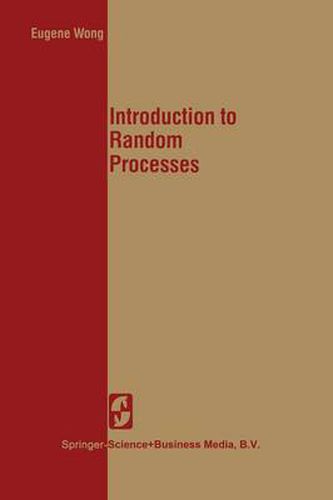Readings Newsletter
Become a Readings Member to make your shopping experience even easier.
Sign in or sign up for free!
You’re not far away from qualifying for FREE standard shipping within Australia
You’ve qualified for FREE standard shipping within Australia
The cart is loading…






This title is printed to order. This book may have been self-published. If so, we cannot guarantee the quality of the content. In the main most books will have gone through the editing process however some may not. We therefore suggest that you be aware of this before ordering this book. If in doubt check either the author or publisher’s details as we are unable to accept any returns unless they are faulty. Please contact us if you have any questions.
For most people, intuitive notions concerning probabilities are connected with relative frequencies of occurrence. For example, when we say that in toss- ing a coin, the probability of its coming up heads is ½, we usually mean that in a large number of tosses, about ½ of the tosses will come up heads. Unfortunately, relative frequency of occurrence has proved to be an unsatis- factory starting point in defining probability. Although there have been attempts to make frequency of occurrence part of the axiomatic structure of probability theory, the currently accepted formu1ation is one based on measure theory due to Ko1mogorov. In this formulation frequency of occurrence is an interpretation for probability rather than adefinition. This inter- pretation is justified under suitab1e conditions by the 1aw of 1arge numbers. The starting point of probability theory is usua11y taken to be an experi- ment the outcome of which is not fixed apriori. Some fami1iar examples inc1ude tossing a die, observation of a noise vo1tage at a fixed time, the error in measuring a physica1 parameter, and the exact touchdown time of an aircraft. Let ~ denote the set of all possib1e outcomes of an experiment. For examp1e, for the experiment of tossing one die, ~ = {1, 2, 3, 4, 5, 6}, whi1e for the touchdown time of an aircraft, ~ might be chosen to be 0 ~ t < 00. We note that for a given experiment on1y one outcome is ever observed.
$9.00 standard shipping within Australia
FREE standard shipping within Australia for orders over $100.00
Express & International shipping calculated at checkout
Stock availability can be subject to change without notice. We recommend calling the shop or contacting our online team to check availability of low stock items. Please see our Shopping Online page for more details.
This title is printed to order. This book may have been self-published. If so, we cannot guarantee the quality of the content. In the main most books will have gone through the editing process however some may not. We therefore suggest that you be aware of this before ordering this book. If in doubt check either the author or publisher’s details as we are unable to accept any returns unless they are faulty. Please contact us if you have any questions.
For most people, intuitive notions concerning probabilities are connected with relative frequencies of occurrence. For example, when we say that in toss- ing a coin, the probability of its coming up heads is ½, we usually mean that in a large number of tosses, about ½ of the tosses will come up heads. Unfortunately, relative frequency of occurrence has proved to be an unsatis- factory starting point in defining probability. Although there have been attempts to make frequency of occurrence part of the axiomatic structure of probability theory, the currently accepted formu1ation is one based on measure theory due to Ko1mogorov. In this formulation frequency of occurrence is an interpretation for probability rather than adefinition. This inter- pretation is justified under suitab1e conditions by the 1aw of 1arge numbers. The starting point of probability theory is usua11y taken to be an experi- ment the outcome of which is not fixed apriori. Some fami1iar examples inc1ude tossing a die, observation of a noise vo1tage at a fixed time, the error in measuring a physica1 parameter, and the exact touchdown time of an aircraft. Let ~ denote the set of all possib1e outcomes of an experiment. For examp1e, for the experiment of tossing one die, ~ = {1, 2, 3, 4, 5, 6}, whi1e for the touchdown time of an aircraft, ~ might be chosen to be 0 ~ t < 00. We note that for a given experiment on1y one outcome is ever observed.